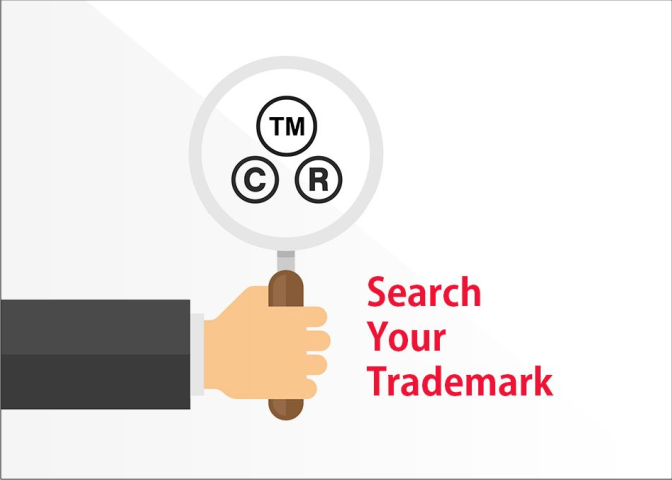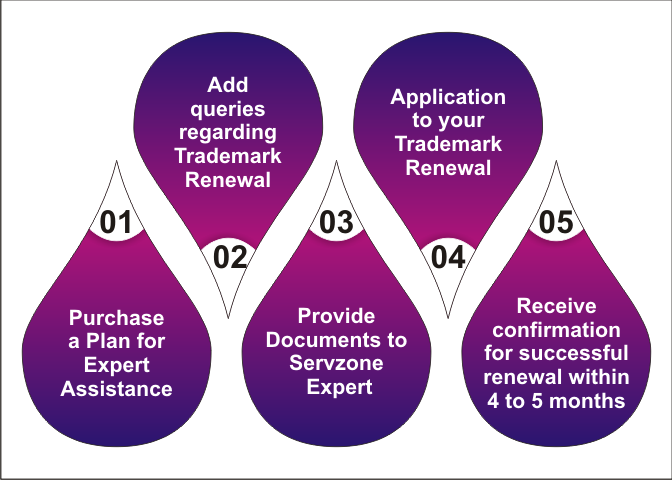Get Started With
servzone
Overview
We all know that trademark searches are an integral part of trademark ownership; However, many companies miss the mark to carry these on a large scale or regularly. Therefore, you should note that a trademark search assures you to find out if similar trademarks are available, and provides you with an unbiased picture of where your trademark stands. Apart from this, it also alerts you whether there is any possibility of conflict or litigation in future. Why waste your money in a never-ending trademark lawsuit when you can avoid it at first? Yes, trademark search takes into account whether a trademark is used or not
The cost and time you spend in a trademark search should be in proportion to the scope and size of your business. For example, a multinational company operating a product needs to be very elaborate and elaborate. You will certainly obtain a legal opinion as to whether your proposed trademark is legally safe to use, and (2) when you decide to work with an attorney while conducting your trademark search.
About trademark search
Trademark search may include results from every corner and scope for every mark for trademark protection avenue similar to a trademark search. An appropriate trademark search strategy would consider the following agenda & rsquo; S.
- The nature of the goods / services that the mark covers,
- nature of sign,
- Allocation of resources to the applicant,
- Timeline to fetch icons in commercial domains.
Trademark searches are usually called & quot; Full search & quot; Or & quot; Knock-out search. & quot;
Knock-Out Trademark Search
A "knock-out search" refers to a search if the trademark is likely to fail in securing a trademark registration to be determined by the “National Trademark Register”.
Possibilities of Knock-Out Trademark Search
Both knock-out searches ‘ Apply-for-mark ’ Which is registered as well as not registered. It also includes applications for registered mark trademarks that have been revoked. This database will detect close matches or similar for a trademark that contains & lsquo; Word mark & ​​rsquo; In question of thematic search.
Example: - This only involves the search of the mark and there are no close variants on the mark. Such as the proposed symbol ‘ PEN Company ’, Inventor " Penn Company, " But not " Pen Company & quot; Or & quot; Pen Store & quot ;; Even though these marks & ldquo; Pen Company & rdquo; Because of their proximity in meaning.
Knock-out trademark search labor
Knock-out trademark searches provide the applicant with subject-wise trademark determining information, which is not eligible for further exploration. It also specifies whether the proposed mark is likely to conflict with the rest of the registered trademarks. It identified all situations if it is useful to rely on that knowledge rather than experiencing additional costs to track the trail.
However, you should note that knock-out search does not provide comprehensive results of trademark availability. As a result, an explicit knock-out search cannot be relied upon as a predictor of success at the request level, nor can it guarantee applications that are not a mark risk. We perform a knock-out trademark search before starting any complete search or trademark application. Customers can also ask for knock-out searches on lists of potential trademarks to limit their search to move forward as a brand.
Full Search
A full search refers to searches in the trademark system that cover all avenues for trademark protection. This shows how close they are to firms and companies searching using computer software. For each of the trademark searches, the quoted results are then compiled into a search report containing the required data. This will include markings that are close variants and are similar to subject marks covering all related goods and services. The lawyer then reviews the results. This is because search reports are typically hundreds and hundreds of pages.
Full search possibilities
Complete searches usually break into country data based on the trademark system. Nevertheless, some trademark systems provide protection such as “ Office for Harmonization in Internal Offices ” (OHIM) is in many countries in the European Union. The trademark search area should go parallel to the countries or countries where the applicant is interested in acquiring their rights.
There can be multiple avenues for trademark protection within each country platforms to be included in the search. In India, trademark rights can come from national registration, state registration and the use of common law. Therefore, the full search results include national registers, state registers, and possible common law rights sources. These include the use of the mark on the Internet, registered domain names, and business names.
Reported results will include markings that are the same or similar to the mark for each trademark protection system that is the subject of the search. The search results will contain all the different words from the mark - if the mark in question is made up of many words.
The marks returned in the search results will include the unrelated baggage marks & amp; Covering services, and related items & amp; Services. Lawyers / attorneys reviewing the results will look for references that contain markings that are of comparable or slightly comparable goods / services.
Search design icon
Design mark searches include trademarks that contain stylistic fonts or a non-verbal graphic. These return search results that show similar graphics for similar goods and / or services.

Servzone procedure
Trademark searches are an integral part of trademark ownership; However, many companies miss the mark to carry these on a large scale or regularly. Despite knowing the importance of doing a trademark search, you may not be fully aware of the complexities of how these should be shown or the critical time they require.
Only a thorough understanding of quick trademark searches can improve your brand's uniqueness and security. Servzone will give you a complete overview and support of many theoretical questions. Such as, what exactly is included in a trademark search, why they should be conducted immediately, when they are needed, and what it means by which you can go about directing your trademark search.
Why Servzone?
Servzone's streamlined trademark search service will visually or voluntarily post to you any efforts made to register the trademark if your trademark is identical. It is easy for you to take action against such infringement and enforce your potential rights when you receive prior identification / notice of such possible misuse. The skilled team at Servzone will ensure that you have complete control over this property, as your registered mark is nothing less than an expensive asset for your business and company. We will keep you informed of any similar / similar new applications in brand names across India and internationally at the Trademark Office or on the web. 
Servzone Process
Servzone is one of the platforms that coordinates to meet all your legal requirements and continuously connects you with professionals. Yes, our clients are pleased with our legal service! Due to our focus on simplifying legal requirements, they have consistently treated us excessively and provide regular updates.
Servzone trademark search is not limited to the same / similar word matches only. We identify similarities in the meaning of the word, as well. We also design a customized trademark watch parameter to meet your specific requirements. In addition, you can store and review your watch reports in our user-friendly portal. In addition, ServiceZone offers extremely affordable services with attractive discounts. To enable you to work faster to protect your intellectual property, Servzone always provides timely reports and alerts to its customers. We show you how to do a trademark search before choosing the name of a business or product, for which we use highly reliable technology to identify phonetic and visual similarity.
Trademark class
A trademark class is an international standard under the World Intellectual Property Organization (WIPO) NICE classification to classify goods and services. It was established by the Nice Agreement (1957), defined by the Nice Agreement (NCL), which was created as part of the agreement, and is updated every year.
List of Category Search
The search list for the trademark category includes 45 categories, including goods and services. The trademark class list includes 11 classes for services and 34 classes for physical goods / products. Before searching and registering for a trademark, one must understand the details of the trademark class when registering the trademark for a product or service.
Lists are as follows: -
- Trademark Class 1 is for chemicals, resins and plastics.
- Trademark Class 2 is for varnishes, paints and anti-corrosion materials
- Trademark Class 3 is for cosmetics, hair oils and lotions and cleaning preparations
- The trademark is for Class 4 Greases, Lubricants, and Fuels
- Trademark Class 5 is for pharmaceutical, medical and sanitary preparations
- Trademark Class 6 is for the goods of metals and alloys, iron-beads and hardware products
- The trademark is for Class 7 equipment and machinery
- Trademark Class 8 is for hand-operated devices and equipment
- Trademark Class 9 is for scientific, electrical and technical equipment
- Trademark Class 10 is for Medical and Surgical Instruments and Instruments
- Trademark Class 11 is for Heating, Cooling, Drying and Refrigerating Equipment
- Trademark Class 12 is for land, air and water vehicles
- Trademark Class 13 is for explosives and firearms
- Trademark Class 14 is for precious metals and stones, and jewelery items
- The trademark class is for 15 miscellaneous musical instruments
- Trademark class 16 is for paper goods, stationery products and printed material
- Trademark Class 17 is for rubber and plastic goods and products
- Trademark Class 18 is for concealed and leaf products
- Trademark Class 19 is for various non-metallic building materials)
- Trademark Class 20 is for furniture and other precious household articles
- Trademark Class 21 is for kitchen utensils, home appliances and glass products
- Trademark Class 22 is for ropes and cordage, fiber, and filling materials
- The trademark for use in textiles is class 23 for yarns and yarns
- Trademark Class 24 is for textiles and clothing
- Trademark Class 25 is for Apparels and Clothing
- Trademark Class 26 is for fringe and fancy goods and products
- Trademark Class 27 is for Floor Covering and Wall Hanging
- Trademark Class 28 is for Toys, Sporting and Sports Goods
- The trademark class is for 29 meats and processed food items
- Trademark Class 30 is for ancillary food and beverages
- Trademark Class 31 is for agricultural and horticultural products
- Trademark Class 32 is for Beers, Light Beverages and Fruit Juices
- Trademark Class 33 is for wines and spirits
- Trademark Class 34: Tobacco Products and Smokers Articles
- Trademark class 36 is for insurance and financial services
- Trademark Class 37 is for building, construction and repair services
- Trademark Class 38 is for telecommunications services
- Trademark Class 39 is for transportation and storage services
- Trademark class 40 is for the treatment of content services
- Trademark class 41 is for education and entertainment services
- Trademark Class 42 is for computer, scientific and legal services
- Trademark class 43 is for hotel and restaurant services
- Trademark Class 44: is for medical, aesthetic and agricultural services
- Trademark class 45 is for personal and social services

GST Registration

PVT. LTD. Company

Loan

Insurance


